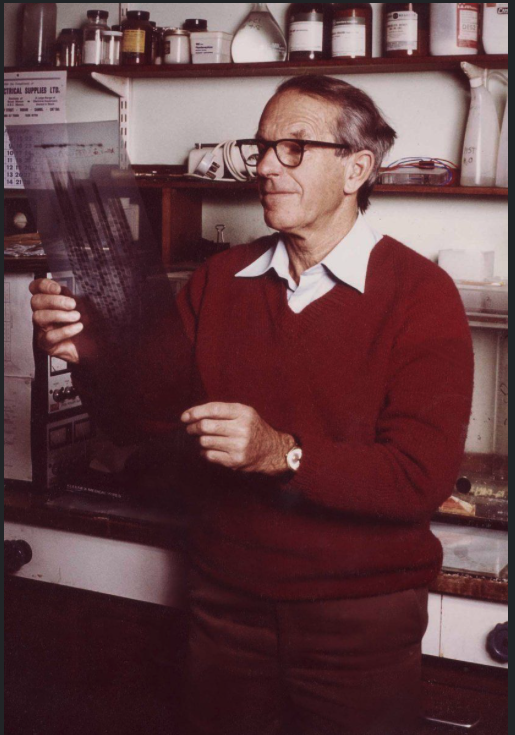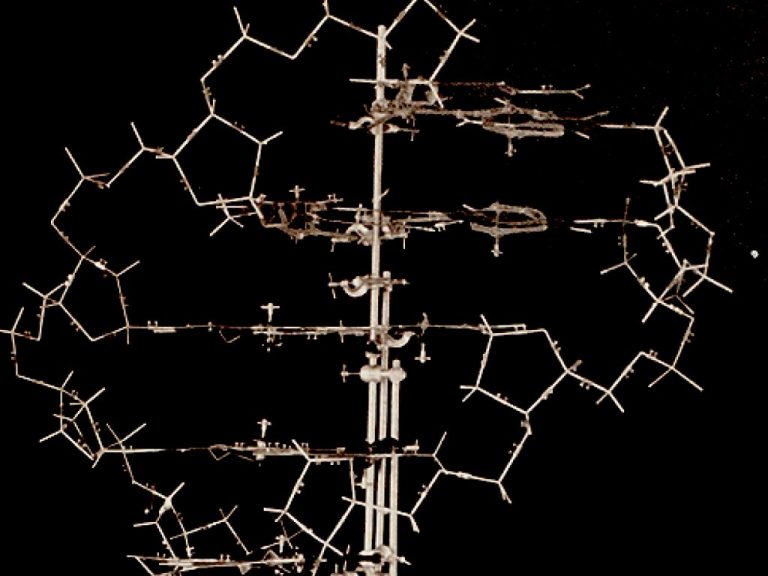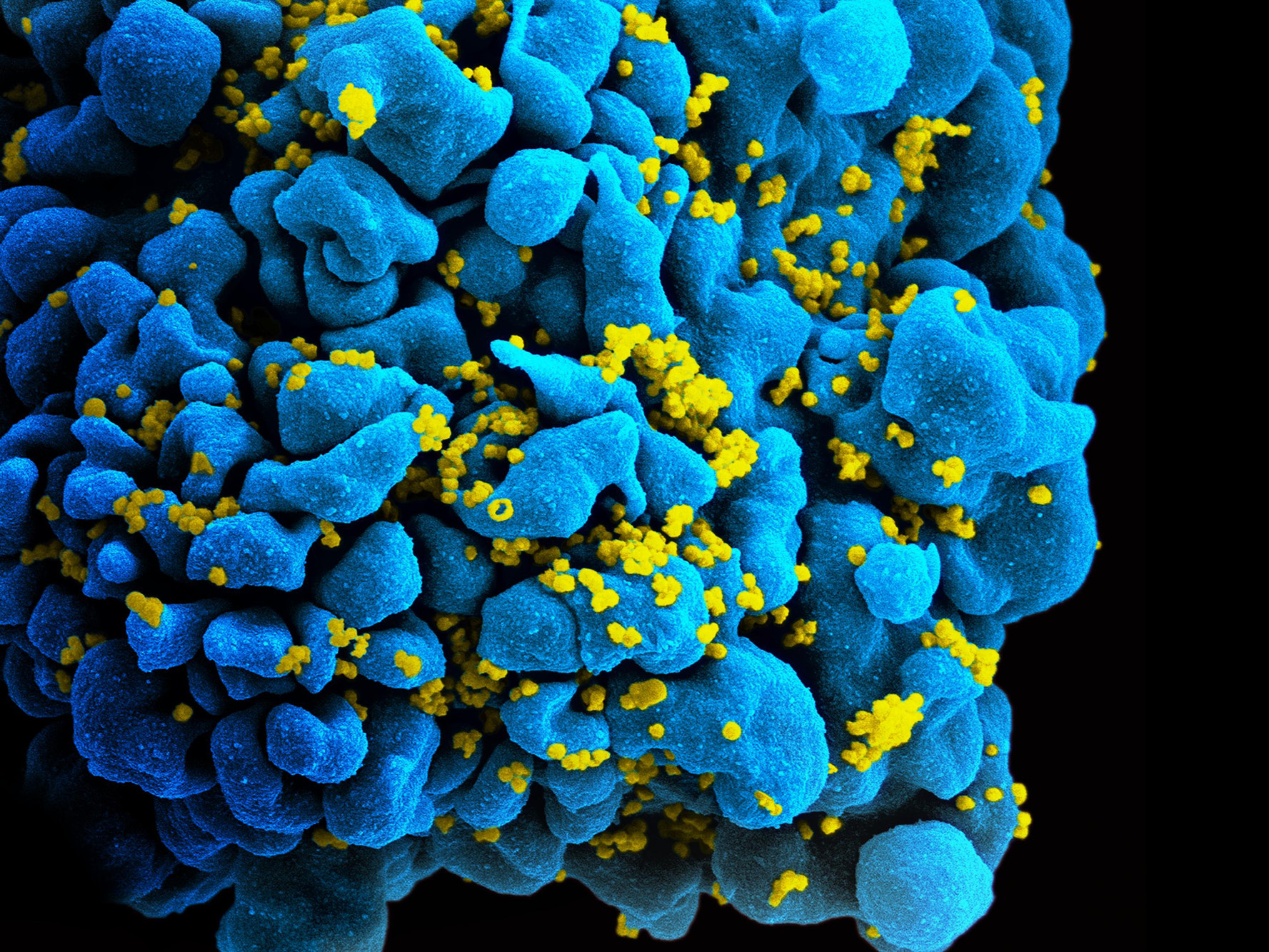Two pioneering molecular biologists were Alfred Hershey and James Watson. From the 1940s, Alfred Hershey, Max Delbrück and Salvador Luria used bacteriophages, viruses that attack bacteria, to study genetics. In a 1952 experiment, Hershey and Martha Chase confirmed that organisms’ genes are recorded in DNA molecules.
Francis Crick and James Watson mapped the structure of the DNA molecule in 1953 and concluded that the structure served as a code. This was a huge step in a deeper understanding of how genes control the processes of life.
Alfred Hershey, Max Delbrück and Salvador Luria were awarded the Nobel Prize in Physiology or Medicine in 1969. Francis Crick and James Watson were awarded the Nobel Prize in Physiology or Medicine in 1962.

Like living organisms, the genes of viruses are found in their DNA or RNA. Analysis of virus DNA and RNA is important in virus research and also in determining if a person has been infected by a virus. This picture was created by Frederick Sanger, who developed an analysis method for DNA. The lines in the picture enable the decoding of the genetic information in DNA. Frederick Sanger and Walter Gilbert were awarded the 1980 Noble Prize in Chemistry for their methods for DNA sequencing. They shared the prize with Paul Berg, who developed a method to edit DNA. Sanger had already received the 1958 Nobel Prize in Chemistry for analyses of proteins. Photo: Medical Research Council, Laboratory of Molecular Biology, Cambridge.

